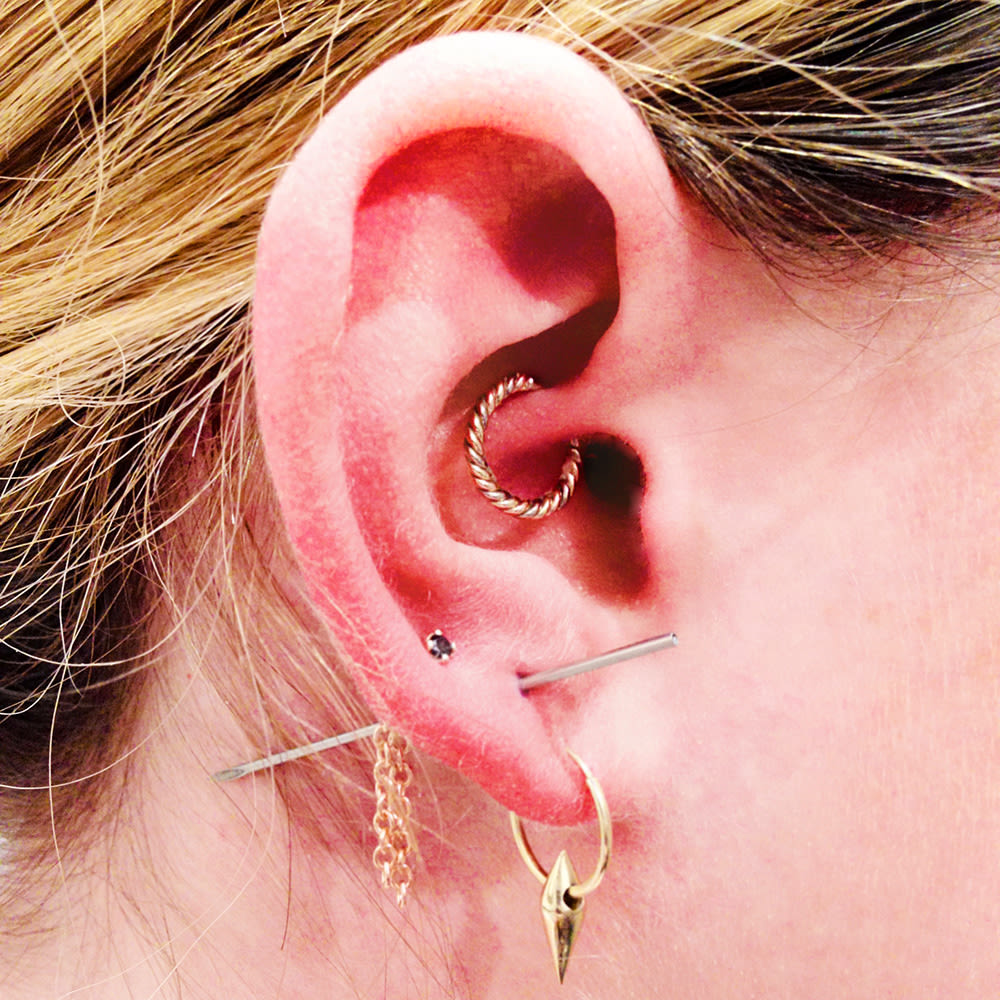Most girls past the age of 16 have at least a single hole in each ear (besides the ones they were born with), be it at the hands of a Claire’s clerk, a technician at Piercing Pagoda, from the doctor’s office, or by your long lost twin at summer camp. But the responsibility of ensuring proper healing falls to the pierced and the pierced alone. So what does that include? We turned to the master, our friend J. Colby Smith for some answers:
“There are two ways to clean a new piercing. A lot of piercers will recommend saline solution, which is saltwater. Our bodies are made up of salt and water, so contact solution and things like that are all made of saltwater. If you’re going this route, use a paper towel or something that is non-fibrous—not a Q-tip, not a cotton ball—and saturate that with the saline so it’s nice and wet and then use it like a sloppy compress over the piercing. There are also a lot of sprays out there. Sometimes they’re meant for wound washes, so the spray is a little stronger, but every once in a while you can find one that sprays in a nice mist which is good for the inside of your ear—it’s easier to get in there. I’d just recommend sticking a little something down inside the ear so the spray doesn’t go into your earhole. [Laughs]
But the way that I usually recommend people clean their piercings, that I think is a little more practical because everyone takes a shower—you know, for the most part—is just with soap and water. It doesn’t really matter what brand of soap as long as there's no alcohol and or perfumes in it. Soap and water has worked for thousands of years, and it will still work now. You don’t want to use alcohol or peroxide because, while they both clean, they take moisture out as well which will lead to more scarring. The idea with the soap and water is that it cleans the wound, but it also leaves some moisture in there.
You want to clean your piercing twice a day. Generally, the more you leave it alone the better off it is. And don’t fiddle with it. A lot of people think that their skin is going to fuse to the jewelry, but it won’t. If it’s wet it's OK to rotate it, but if it’s dry that will break the scab and cause it to bleed, which creates another open wound so it will just take longer to heal.
The number one problem I see with piercings is that a lot of people talk about the little bump that they get; out of every 60 that I do, I see at least five that come back with the little bumps on them, which is a result of trauma on the wound. Especially with your ears—it’s from laying on your piercing, or if you snag it with a hairbrush, or if you’re taking your shirt off and you snag it on that, or if you’re making out with someone and they get a hold of it wrong. These things remind your body that there is a foreign object there, which sort of reactivates the healing process.
The most important thing to remember is that you know your body better than I do, and you have to listen to what your body is saying. We’re all different. Your body’s job is to get rid of a foreign object, so if you make a hole and put a foreign object in there, your body will immediately go to work trying to get rid of it. The area swells, which is basically your body's way of trying to force the object out of there. Usually we do piercings thick enough and deep enough to force the body into just accepting the fact that the piercing needs to stay there, and your skin will just heal around it instead of getting rid of it. It’s also important to remember is that there is no miracle cure. A lot of people come in, they get pierced, and they think that that’s it. The healing process involves keeping it clean and time—time being the most important thing. If you’re not a patient person then piercings are not for you.”
—as told to ITG
Photo by J. Colby Smith.

